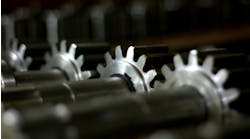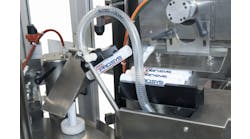On the Job: Removing Surface Oil and Grease
In most industrial settings there are tools and equipment caked in oils and grease that need to be removed. The contaminants build up and can quickly damage different equipment and surfaces. Grease and oily build-up need to be cleaned away to remove and work on equipment components since tools become hard to handle and inefficient when they are greasy.
To cut through the crud—whether it’s grease, tar, ink, asphalt, oil or dirt—industrial cleaners and degreasers are essential to maintain industrial sites, machinery, tools, and parts.
An industrial degreaser is an extra strong detergent designed to liquefy oils and grease holding contaminants in place and making them easy to remove. Degreasers are used across various industries such as automotive, agriculture, aviation, maritime, HVAC, manufacturing, oil & gas, utilities, and more.
What to Look for in an Industrial Degreaser
Look at how well it works.
Does it cut through grease?
It should dissolve and liquefy substances for easy removal on multiple surfaces. It should not damage or leave residue on the surface. The cleaning should be complete with no oily film left behind.
Is it fast acting?
A degreaser should work with a minimum amount of soak time to break down the grease for removal. Complete removal should be accomplished with minimal physical effort. The pros look for efficacy and speed.
Is it safe to use?
The product label and safety data sheet should give clear direction for proper use including personal protection equipment.
Does it take one or multiple applications to get the job done?
The two factors that contribute to the cost of a project are time and money. Getting the job done with one application saves you both. Using less is more efficient. If a degreaser takes 2 to 3 applications, it’s not as cost-effective.
“That’s what we found in the lab, working with different thicknesses and layers of grease,” said Jeffrey Stewart, Kano Laboratories – Technical Sales Engineer, producer of Kano Floway Degreaser.
“We only needed one application to wipe away grease and it would take 2-3 applications with the competitors’ product. It works fast and it works well.”
Liquid and Aerosol
An industrial degreaser can be brushed on or wiped with a rag in liquid form. It can also be used to soak parts. Soaking works well for parts that are tough to clean and have heavy carbon deposits with the oily buildup.
An aerosol degreaser can be sprayed on and wiped off. Additionally, it uses a direct stream that can be concentrated on a specific area.
“Ease of application, whether sprayed, soaked, or dipped, are attributes to look for,” said Stewart.
Safety
As with all solvents, use these products in a well-ventilated area and use proper personal protection equipment (PPE). Instructions on the product label should be followed closely. Consult the product safety data sheet (SDS) for product handling and storage.










